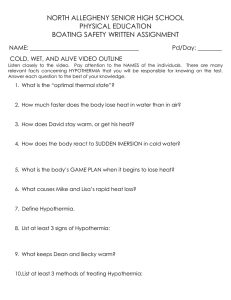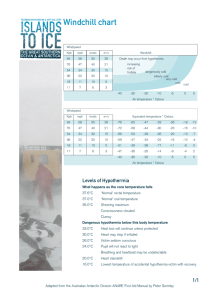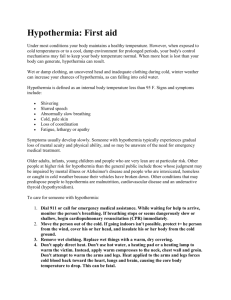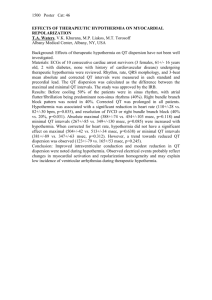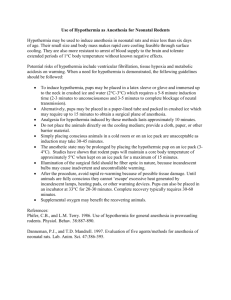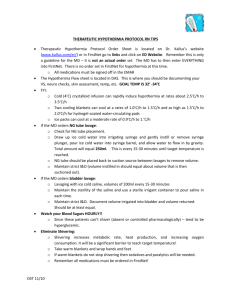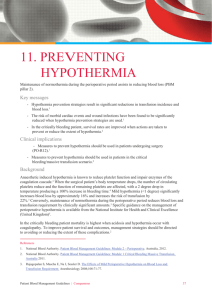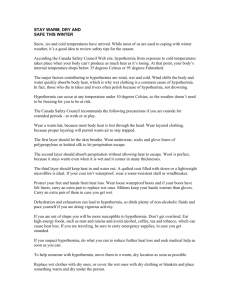Therapeutic Hypothermia
advertisement
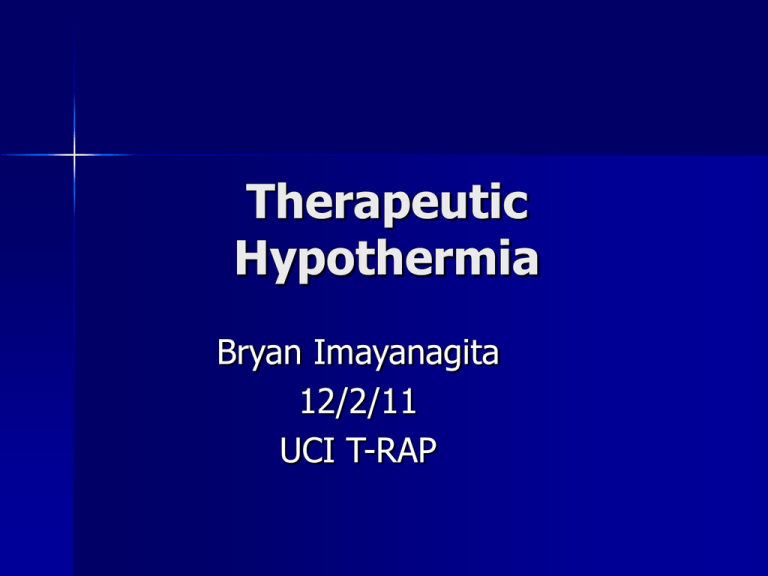
Therapeutic Hypothermia Bryan Imayanagita 12/2/11 UCI T-RAP Background Protective hypothermia Reduce ischemic injury to tissue Invasive and non invasive treatments Can reduce ischemic brain injuries Categories of Treatment Hypothermia therapy for neonatal encephalopathy Cardiac arrest Stroke TBI/spinal cord injury Neurogenic Fever Mechanism of Protection by Hypothermia Slowing of cellular metabolism (every 1 degree, metabolism slows by 5-7%) Can act as a neuroprotectant Oxygen deprivation leads to imbalance in ion homeostasis (insufficient ATP) Cell membrane made more impermeable to prevent flow of ions Invasive Treatment Invasive: cooling catheters – NS through femoral vein – Control unit to bring down temperature (very accurate) – complications Bleeding Infection DVT Non Invasive Treatment Cold water blanket, torso vest, leg wraps Can overshoot or undershoot target temperature References Diringer, Michael. “Treatment of fever in the neurologic intensive care unit with a catheter-based heat exchange system.” Crit Care Med. Vol. 32, No. 2. 2004. Holzer, Michael. “Mild Hypothermia to Improve the Neurologic Outcome After Cardiac Arrest.” New England Journal of Medicine. (2002) Vol. 346, No. 8. Polderman, Kees H. “Application of therapeutic hypothermia in the ICU.” Intensive Care Med. (2004) 30:556-575. Schwab, S. et al. “Moderate Hypothermia in the Treatment of Patients with Severe Middle Cerebral Artery Infarction.” American Heart Association. pg. 2461-2466 Simosa, H. et al. “Increased Risk of Deep Venous Thrombosis with Endovascular Cooling in Patients with Traumatic Head Injury."
